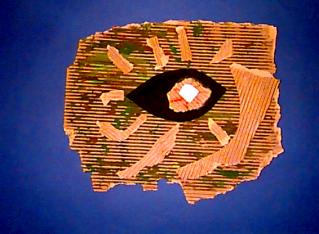lucero m. morning or evening star:
any bright star....
2. hole in a window panel for the
admission of light....
Sal a tu ventana,
que mi canto es para ti....
Lucero, lucero, lucero, lucero
— "Ya la ronda llega aquí"

in the New York Times of December 5.
The photo, from a different website, is
of a room by the architect Luis Barragán.
From the Nobel Prize lecture of Octavio Paz on December 8, 1990 — twelve years ago today:
"Like every child I built emotional bridges in the imagination to link me to the world and to other people. I lived in a town on the outskirts of Mexico City, in an old dilapidated house that had a jungle-like garden and a great room full of books. First games and first lessons. The garden soon became the centre of my world; the library, an enchanted cave. I used to read and play with my cousins and schoolmates. There was a fig tree, temple of vegetation, four pine trees, three ash trees, a nightshade, a pomegranate tree, wild grass and prickly plants that produced purple grazes. Adobe walls. Time was elastic; space was a spinning wheel. All time, past or future, real or imaginary, was pure presence. Space transformed itself ceaselessly. The beyond was here, all was here: a valley, a mountain, a distant country, the neighbours' patio. Books with pictures, especially history books, eagerly leafed through, supplied images of deserts and jungles, palaces and hovels, warriors and princesses, beggars and kings. We were shipwrecked with Sindbad and with Robinson, we fought with d'Artagnan, we took Valencia with the Cid. How I would have liked to stay forever on the Isle of Calypso! In summer the green branches of the fig tree would sway like the sails of a caravel or a pirate ship. High up on the mast, swept by the wind, I could make out islands and continents, lands that vanished as soon as they became tangible. The world was limitless yet it was always within reach; time was a pliable substance that weaved an unbroken present."
Today's site music is courtesy of the Sinatra MIDI Files.











Recent Comments